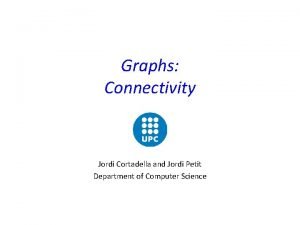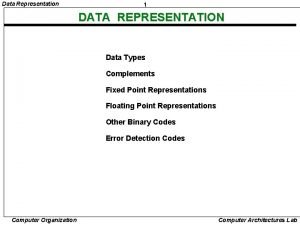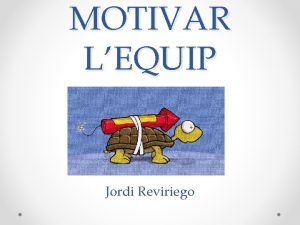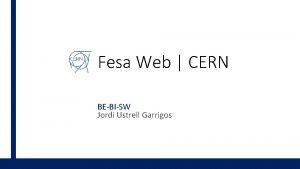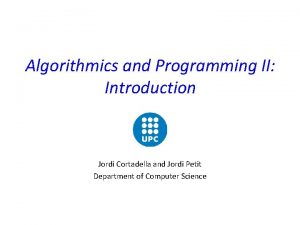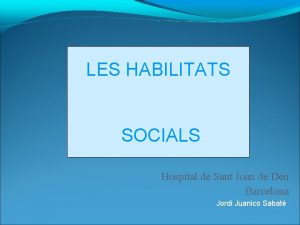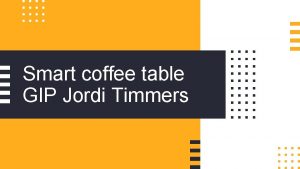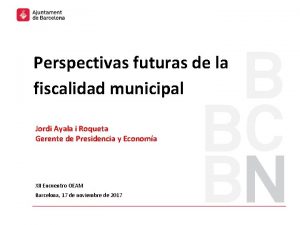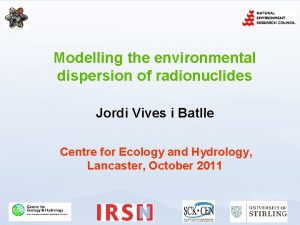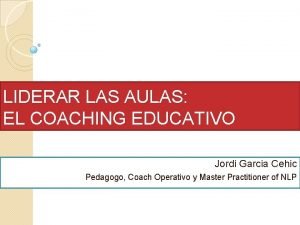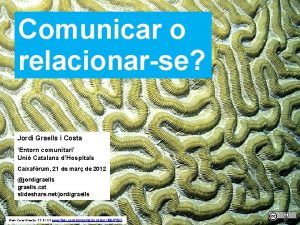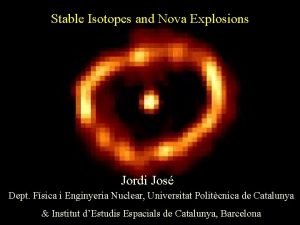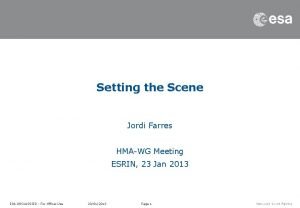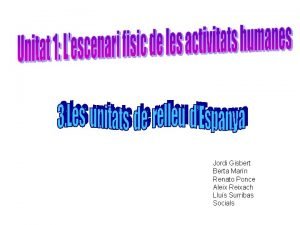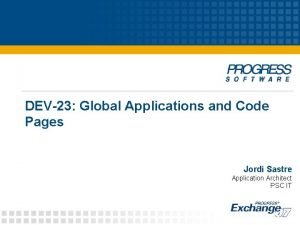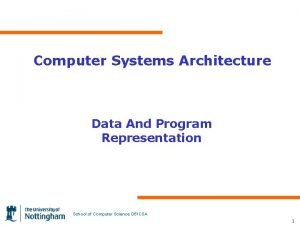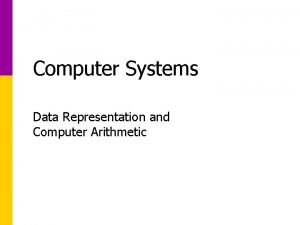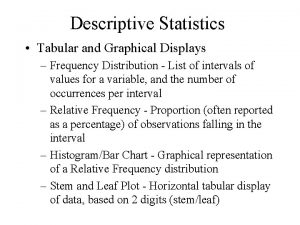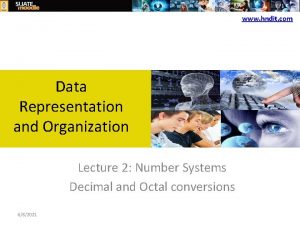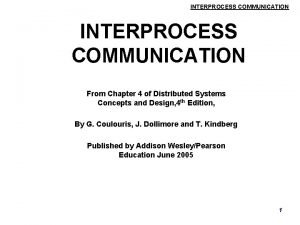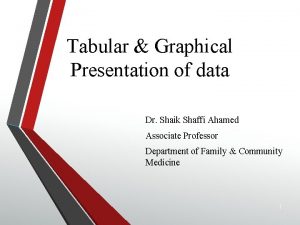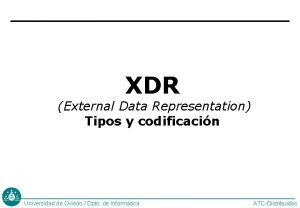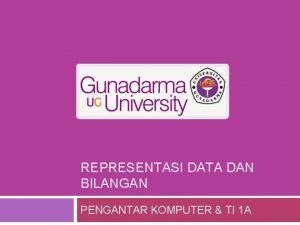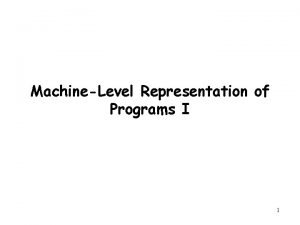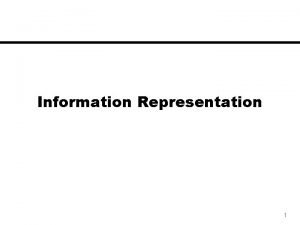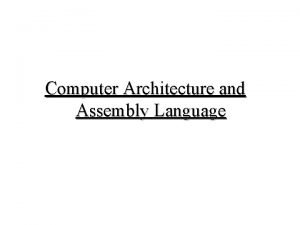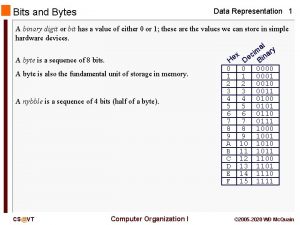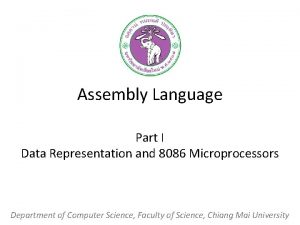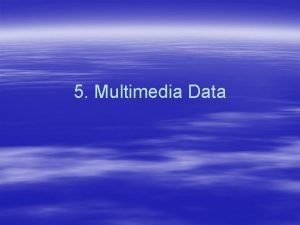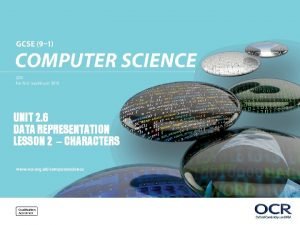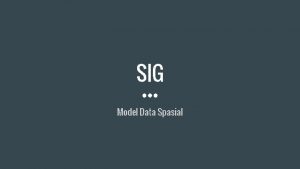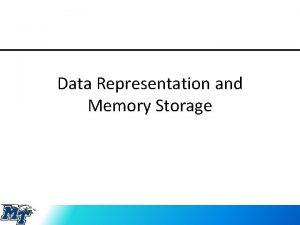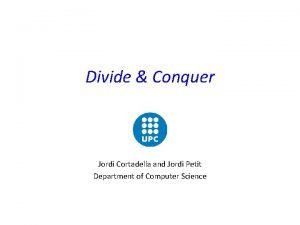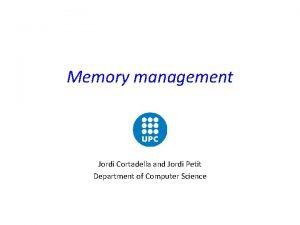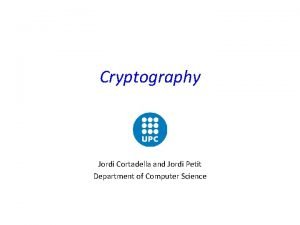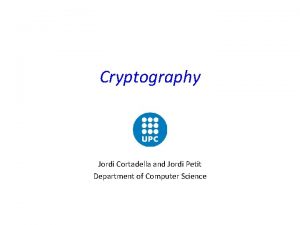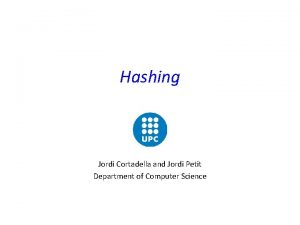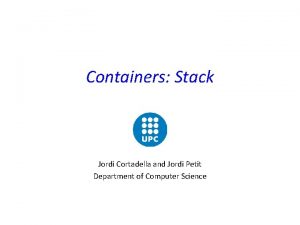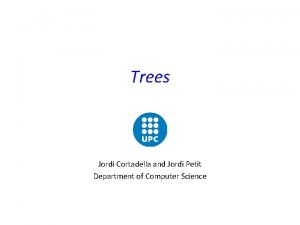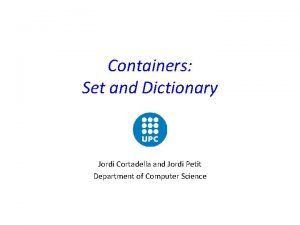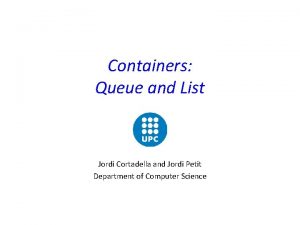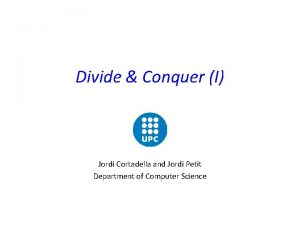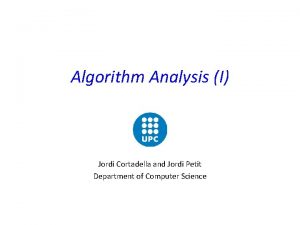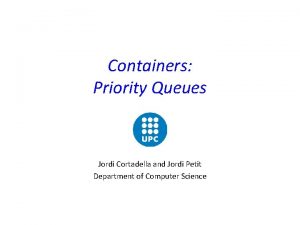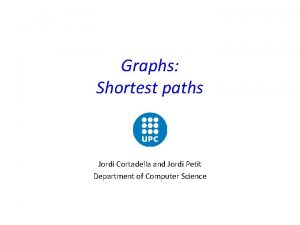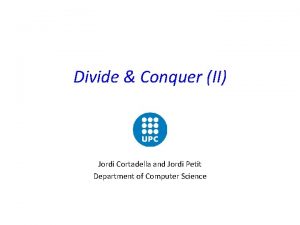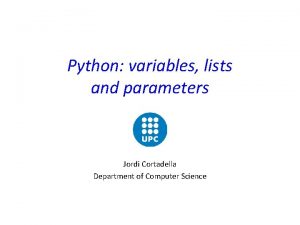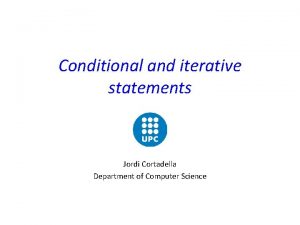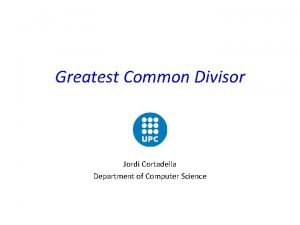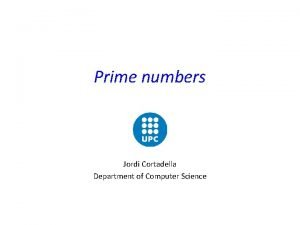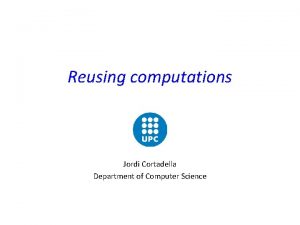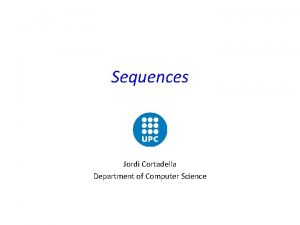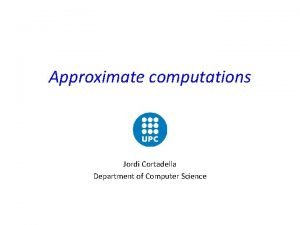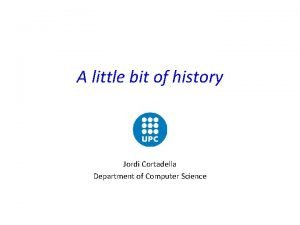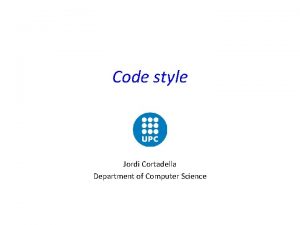Data types and their representation Jordi Cortadella Department


































- Slides: 34

Data types and their representation Jordi Cortadella Department of Computer Science

Outline • Data representation • Boolean expressions • Real numbers Introduction to Programming © Dept. CS, UPC 2

The memory int • • • Address 1036 1040 1044 1048 1052 1056 1060 1064 1068 1072 1076 1080 1084 0 0 0 1 0 0 0 0 0 1 0 1 0 0 1 1 0 0 0 1 H 1 1 o 0 0 r 1 1 0 0 1 0 1 0 0 0 0 1 1 0 0 0 1 0 1 0 1 0 0 0 1 1 0 0 0 0 1 0 1 0 1 0 0 1 0 0 0 0 string (“Hello world”) Introduction to Programming 0 0 0 1 0 0 byte 0 1 0 0 0 1 e 0 0 1 1 l 0 1 0 0 0 1 0 0 1 1 1 0 0 0 1 0190 0 1 0 0 0 1 000 0 0 1 1 • • • © Dept. CS, UPC 0 0 1 0 1 0 0 1 0 0 0 l 1 1 w 0 0 d 0 0 1 1 1 0 0 0 0 1 0 0 0 0 0 0 1 0 0 1 0 0 0 0 0 0 1 0 1 0 0 0 0 1 l 0 0 o 1 1 0 0 0 0 1 0 1 1 0 0 0 1 0 0 1 3

How much memory do we have? Our laptop has few Gbytes of memory: Introduction to Programming © Dept. CS, UPC 4

Number representation 100 10 1 2 1 7 125 25 5 1 1 3 3 2 81 27 9 3 64 32 16 8 4 2 base 5 1 2 2 0 0 1 128 base 10 base 3 1 1 1 0 0 1 base 2 CCXVII Roman Introduction to Programming © Dept. CS, UPC 5

Write the binary representation Design a procedure that, given a number n, writes its binary representation (in reverse order). // Pre: n 0 // Writes the binary representation of n // in reverse order. void base 2(int n); 128 64 32 16 8 4 2 1 1 1 0 0 1 n/2 n%2 1 1 0 0 Introduction to Programming Write: 10011011 © Dept. CS, UPC 1 6

Write the binary representation // Pre: n 0 // Writes the binary representation of n // in reverse order. void base 2(int n) { while (n > 1) { cout << n%2; n = n/2; } cout << n << endl; } Introduction to Programming © Dept. CS, UPC n cout 217 1 108 0 54 0 27 13 6 3 1 1 1 0 1 1 7

Exercise Design a procedure that, given a number n and a base b, writes the representation of n in base b (in reverse order). // Pre: n 0, 2 b 9. // Writes the binary representation of n // in base b (in reverse order). void base(int n, int b); Introduction to Programming © Dept. CS, UPC 8

Boolean expressions Introduction to Programming © Dept. CS, UPC

Boolean Algebra George Boole, 1815 -1864 Introduction to Programming © Dept. CS, UPC 10

Maximum of three numbers // Returns max(a, b, c) int max 3(int a, int b, int c); a, b, c a > b and a > c a, b, c a >= b and a >= c else a b, c b > c b Introduction to Programming else a else c b, c b >= c b © Dept. CS, UPC else c 11

Maximum of three numbers // Returns max(a, b, c) int max 3(int a, int b, int c) { if (a > b and a > c) { return a; a, b, c } else { a > b if (b > c) { else and return b; Choose a > c } else { between return b and cc; a b, c } } b > c else } b c Introduction to Programming © Dept. CS, UPC 12

Maximum of three numbers // Returns max(a, b, c) int max 3(int a, int b, int c) { if (a > b and a > c) return a; if (b > c) return b; return c; } Introduction to Programming © Dept. CS, UPC 13

Boolean operators if (a > b and a > c) … while (i >= 10 or c == 0) … if (not (a < b and a < c)) … Introduction to Programming © Dept. CS, UPC 14

Truth tables a false true b a and b false true false true a false true b a or b false true true a not a false true false Introduction to Programming © Dept. CS, UPC 15

Boolean expressions x > 2 and x < 7 x >= 3 and x <= 6 x -3 -2 -1 0 1 2 4 5 6 7 8 9 10 11 12 13 x <= 2 or x > 7 … -3 -2 -1 … 3 0 1 2 3 0 5 6 7 8 9 10 11 12 13 not (x <= 2) x > 2 x <= 2 -3 -2 -1 4 … 1 2 3 4 5 6 7 8 9 10 11 12 13 … x == ? 5 -3 -2 -1 Introduction to Programming 0 1 2 3 4 5 6 © Dept. CS, UPC 16

Boolean expressions x > 2 and x < 7 x >= 3 and x <= 6 -3 -2 -1 0 1 2 4 5 6 7 8 9 10 11 12 13 x <= 2 or x > 7 … -3 -2 -1 … 3 0 1 2 3 0 5 6 7 8 9 10 11 12 13 not (x <= 2) x > 2 x <= 2 -3 -2 -1 4 … 1 2 3 4 5 6 7 8 9 10 11 12 13 not (x == 5) x != 5 … -3 -2 -1 Introduction to Programming 0 1 2 3 4 5 6 © Dept. CS, UPC 7 … … 8 9 10 11 12 13 17

Exercise -3 -2 -1 0 1 2 3 4 5 6 7 8 9 10 11 12 13 x == 0 or x == 6 Introduction to Programming © Dept. CS, UPC 18

Exercise … -3 -2 -1 0 1 2 3 4 5 6 7 8 9 10 11 12 13 x == 0 or x > 5 Introduction to Programming © Dept. CS, UPC 19

Exercise … … -3 -2 -1 0 1 2 3 4 5 6 7 8 9 10 11 12 13 x%2 == 0 Introduction to Programming © Dept. CS, UPC 20

Exercise -3 -2 -1 0 1 2 3 4 5 6 7 8 9 10 11 12 13 (x > -1 and x < 3) or (x >= 6 and x < 11) Introduction to Programming © Dept. CS, UPC 21

Complement of and/or … … -3 -2 -1 0 1 2 3 4 5 6 7 8 9 10 11 12 13 (x > 2 and x < 7) not not x <= 2 or x >= 7 De Morgan’s law Introduction to Programming © Dept. CS, UPC 22

De Morgan’s law not (e 1 and e 2) not e 1 or not e 2 not (e 1 or e 2) not e 1 and not e 2 Exercise Simplify: not (x >= y or y%2 == 0) x < y and y%2 != 0 Introduction to Programming © Dept. CS, UPC 23

Operator precedence a + b c (a + b) c a or b and c Introduction to Programming (a or b) and c © Dept. CS, UPC 24

Real numbers Introduction to Programming © Dept. CS, UPC

Intersection of circles • Write a program that reads the center and the radius of two circles and prints “yes” or “no” depending on whether they intersect or not. • Example: x 1, y 1, r 1 x 2, y 2, r 2 2 5. 3 1. 34 0 0 2 no 1. 5 2. 5 10 0. 5 3. 6 4. 3 yes Introduction to Programming © Dept. CS, UPC 26

Intersection of circles Circles intersect if and only if the distance between centers is smaller than or equal to the sum of radii. Introduction to Programming © Dept. CS, UPC 27

Intersection of circles Introduction to Programming © Dept. CS, UPC 28

Intersection of circles // Reads the center and radius of two circles // and prints whether they intersect or not. int main() { double x 1, y 1, r 1, x 2, y 2, r 2; // Real numbers cin >> x 1 >> y 1 >> r 1 >> x 2 >> y 2 >> r 2; double dx = x 1 – x 2; dx = dx dx; double dy = y 1 – y 2; dy = dy dy; double r = r 1 + r 2; r = r r; // (x 1 – x 2)^2 // (y 1 – y 2)^2 // (r 1 + r 2)^2 bool intersect = dx + dy <= r; // true or false if (intersect) cout << "yes" << endl; else cout << "no" << endl; } Introduction to Programming © Dept. CS, UPC 29

Boolean variables bool b = false; b = i <= n; // true if i <= n, false if i > n b = x + y > z; b = (i < 10) and (j >= 20); b = (large and not found) or (x > y); b = true; if (b) { … } // if (b == true) { … } while (not b) {…} // while (b == false) { … } Introduction to Programming © Dept. CS, UPC 30

Real numbers • Two types: – float (single precision, 32 bits) – double (double precision, 64 bits) • Arithmetic operations: + - / (no remainder) • Real constants: 2 -5. 003 3. 1416 Introduction to Programming © Dept. CS, UPC 1. 4 e 9 0. 6 E-15 31

Type conversion • Arithmetic operations between integer and real values usually imply an implicit type conversion. • Be careful: int i=3, j=2; double x; x = i/j; x = i/double(j); x = double(i)/j; x = double(i/j); x = i/2. 0; // // // i = x; j = 3. 14159265; // i = 1 // j = 3 Introduction to Programming x x x © Dept. CS, UPC = = = 1. 0 1. 5 32

Revisiting intersection of circles // Returns x 2 double sq(double x) { return x x; } // Reads the center and radius of two circles // and prints whether they intersect or not. int main() { double x 1, y 1, r 1, x 2, y 2, r 2; cin >> x 1 >> y 1 >> r 1 >> x 2 >> y 2 >> r 2; if (sq(x 1 – x 2) + sq(y 1 – y 2) <= sq(r 1 + r 2)) cout << "yes"; else cout << "no"; cout << endl; } Introduction to Programming © Dept. CS, UPC 33

Summary • Variables are stored in memory locations and internally represented as bit vectors. • Boolean expressions and variables: – Can take two values: true or false. – Use negative thinking when simpler than positive thinking (apply De Morgan’s law). • Real values: – Can be represented with a limited precision. – Be careful with int double conversions. Introduction to Programming © Dept. CS, UPC 34
 Jordi cortadella
Jordi cortadella Numeric data representation
Numeric data representation Jordi reviriego
Jordi reviriego Jordi ustrell
Jordi ustrell Jordi benlliure
Jordi benlliure Language telegram
Language telegram Jordi juanico sabate
Jordi juanico sabate Jordi timmers
Jordi timmers Jordi ayala roqueta
Jordi ayala roqueta Jordi vives i batlle
Jordi vives i batlle Jordi garcia cehic
Jordi garcia cehic Jordi graells costa
Jordi graells costa Jordi npa
Jordi npa Jordi scene
Jordi scene Jordi vives i batlle
Jordi vives i batlle Dosmasuno arquitectos
Dosmasuno arquitectos Jordi gisbert
Jordi gisbert Dev23
Dev23 Ascii definition computer science
Ascii definition computer science Data representation and computer arithmetic
Data representation and computer arithmetic Tabular and graphical representation of data
Tabular and graphical representation of data Data representation and organization
Data representation and organization Interprocess communication in distributed systems
Interprocess communication in distributed systems Tabular and graphical representation of data
Tabular and graphical representation of data Xdr external data representation
Xdr external data representation Data representation computer science
Data representation computer science Machine level representation of data
Machine level representation of data Information representation in computer architecture
Information representation in computer architecture Assembly language
Assembly language Data representation in memory bit
Data representation in memory bit Data representation in assembly language
Data representation in assembly language Digital representation in multimedia
Digital representation in multimedia Unit 2 data representation
Unit 2 data representation Is a graphical representation of data
Is a graphical representation of data Data representation in memory
Data representation in memory
